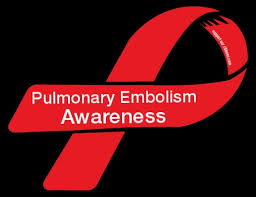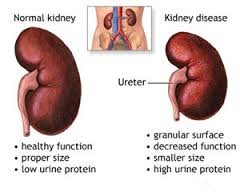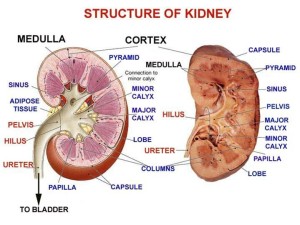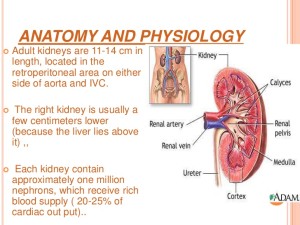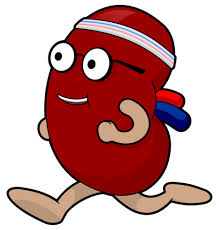QUOTE FOR TUESDAY:
“Breast cancer occurs nearly 100 times more often in women than in men. Age: Two out of three women with invasive cancer are diagnosed after age 55.“
National Breast Cancer Foundation (www.nationalbreastcancer.org)
QUOTE FOR MONDAY:
“Benign (non-cancerous) breast conditions are very common, and most women have them. In fact, most breast changes are benign. Unlike breast cancers, benign breast conditions are not life-threatening. But some are linked with a higher risk of getting breast cancer later on.”
American Cancer Society
QUOTE FOR THE WEEKEND:
![]() Every year, as many as 900,000 people in the United States are affected by deep vein thrombosis (DVT) and/or pulmonary embolism (PE), and about 100,000 die. Having DVT or PE blood clots can be frightening. DVT and PE blood clots are serious but treatable conditions. Arm yourself with the right information to treat and prevent blood clots.
Every year, as many as 900,000 people in the United States are affected by deep vein thrombosis (DVT) and/or pulmonary embolism (PE), and about 100,000 die. Having DVT or PE blood clots can be frightening. DVT and PE blood clots are serious but treatable conditions. Arm yourself with the right information to treat and prevent blood clots.
Xarelto.com
What is a Pulmonary Embolism?
Pulmonary embolism (PULL-mun-ary EM-bo-lizm), or PE, is a sudden blockage in a lung artery. The blockage usually is caused by a blood clot that travels to the lung from a vein in the leg. The clot gets to the right side of the heart and goes into the upper chamber (atrium) down to the lower chamber (ventricles) to the pulmonary artery bringing the clot into the lungs.
A clot that forms in one part of the body and travels in the bloodstream to another part of the body is called an embolus (EM-bo-lus).
PE is a serious condition that can:
- Damage part of your lung because of a lack of blood flow to your lung tissue. This damage may lead to pulmonary hypertension (increased pressure in the pulmonary arteries).
- Cause low oxygen levels in your blood.
- Damage other organs in your body because of a lack of oxygen.
If a blood clot is large, or if there are many clots, PE can cause death.
Overview
PE most often is a complication of a condition called deep vein thrombosis (DVT). In DVT, blood clots form in the deep veins of the body—most often in the legs. These clots can break free, travel through the bloodstream to the lungs, and block an artery.
Deep vein clots are not like clots in veins close to the skin’s surface. Those clots remain in place and do not cause PE.
Outlook
The exact number of people affected by DVT and PE isn’t known. Estimates suggest these conditions affect 300,000 to 600,000 people in the United States each year.
If left untreated, about 30 percent of patients who have PE will die. Most of those who die do so within the first few hours of the event.
The good news is that a prompt diagnosis and proper treatment can save lives and help prevent the complications of PE.
Other Names for Pulmonary Embolism
- Venous thromboembolism (VTE). This term is used for both pulmonary embolism and deep vein thrombosis.
What Causes Pulmonary Embolism?
Major Causes
Pulmonary embolism (PE) usually begins as a blood clot in a deep vein of the leg. This condition is called deep vein thrombosis. The clot can break free, travel through the bloodstream to the lungs, and block an artery.
Blood clots can form in the deep veins of the legs if blood flow is restricted and slows down. This can happen if you don’t move around for long periods, such as:
- After some types of surgery
- During a long trip in a car or airplane
- If you must stay in bed for an extended time
Blood clots are more likely to develop in veins damaged from surgery or injured in other ways.
Other Causes
Rarely, an air bubble, part of a tumor, or other tissue travels to the lungs and causes PE. Also, if a large bone in the body (such as the thigh bone) breaks, fat from the bone marrow can travel through the blood. If the fat reaches the lungs, it can cause PE.
Who Is at Risk for Pulmonary Embolism?
Pulmonary embolism (PE) occurs equally in men and women. The risk increases with age. For every 10 years after age 60, the risk of having PE doubles.
Certain inherited conditions, such as factor V Leiden, increase the risk of blood clotting and PE.
Major Risk Factors
Your risk for PE is high if you have deep vein thrombosis (DVT) or a history of DVT. In DVT, blood clots form in the deep veins of the body—most often in the legs. These clots can break free, travel through the bloodstream to the lungs, and block an artery.
Your risk for PE also is high if you’ve had the condition before.
Other Risk Factors
Other factors also can increase the risk for PE, such as:
- Being bedridden or unable to move around much
- Having surgery or breaking a bone (the risk goes up in the weeks following the surgery or injury)
- Having certain diseases or conditions, such as a stroke, paralysis (an inability to move), chronic heart disease, or high blood pressure
- Smoking
People who have recently been treated for cancer or who have a central venous catheter are more likely to develop DVT, which increases their risk for PE. A central venous catheter is a tube placed in a vein to allow easy access to the bloodstream for medical treatment. A clot can form at the end of it but usually in preventing this if not heparin bolus (ex.300 U in 5 cc of normal saline) is flushed in the catheter if not just flushing the catheter with 10cc of normal saline the prevent the clot forming every 8 hrs or 12 hrs.
Other risk factors for DVT include sitting for long periods (such as during long car or airplane rides), pregnancy and the 6-week period after pregnancy, and being overweight or obese. Women who take hormone therapy pills or birth control pills also are at increased risk for DVT.
The risk of developing blood clots increases as your number of risk factors increases.
What Are the Signs and Symptoms of Pulmonary Embolism?
Major Signs and Symptoms
Signs and symptoms of pulmonary embolism (PE) include unexplained shortness of breath, problems breathing, chest pain, coughing, or coughing up blood. An arrhythmia (irregular heartbeat) also may suggest that you have PE.
Sometimes the only signs and symptoms are related to deep vein thrombosis (DVT). These include swelling of the leg or along a vein in the leg, pain or tenderness in the leg, a feeling of increased warmth in the area of the leg that’s swollen or tender, and red or discolored skin on the affected leg.
See your doctor right away if you have any signs or symptoms of PE or DVT. It’s also possible to have PE and not have any signs or symptoms.
Other Signs and Symptoms
Some people who have PE have feelings of anxiety or dread, light-headedness or fainting, rapid breathing, sweating, or an increased heart rate.
How Is Pulmonary Embolism Diagnosed?
Pulmonary embolism (PE) is diagnosed based on your medical history, a physical exam, and test results.
Doctors who treat patients in the emergency room often are the ones to diagnose PE with the help of a radiologist. A radiologist is a doctor who deals with x rays and other similar tests.
Medical History and Physical Exam
To diagnose PE, the doctor will ask about your medical history. He or she will want to:
- Find out your deep vein thrombosis (DVT) and PE risk factors
- See how likely it is that you could have PE
- Rule out other possible causes for your symptoms
Your doctor also will do a physical exam. During the exam, he or she will check your legs for signs of DVT. He or she also will check your blood pressure and your heart and lungs.
Diagnostic Tests
Many tests can help diagnose PE. Which tests you have will depend on how you feel when you get to the hospital, your risk factors, available testing options, and other conditions you could possibly have. You may have one or more of the following tests.
Ultrasound
Doctors can use ultrasound to look for blood clots in your legs. Ultrasound uses sound waves to check blood flow in your veins.
For this test, gel is put on the skin of your legs. A hand-held device called a transducer is moved back and forth over the affected areas. The transducer gives off ultrasound waves and detects their echoes as they bounce off the vein walls and blood cells.
A computer turns the echoes into a picture on a computer screen, allowing the doctor to see blood flow in your legs. If the doctor finds blood clots in the deep veins of your legs, he or she will recommend treatment.
DVT and PE both are treated with the same medicines.
Computed Tomography Scans
Doctors can use computed tomography (to-MOG-rah-fee) scans, or CT scans, to look for blood clots in the lungs and legs.
For this test, dye is injected into a vein in your arm. The dye makes the blood vessels in your lungs and legs show up on x-ray images. You’ll lie on a table, and an x-ray tube will rotate around you. The tube will take pictures from many angles.
This test allows doctors to detect most cases of PE. The test only takes a few minutes. Results are available shortly after the scan is done.
Lung Ventilation/Perfusion Scan
A lung ventilation/perfusion scan, or VQ scan, uses a radioactive substance to show how well oxygen and blood are flowing to all areas of your lungs. This test can help detect PE.
Pulmonary Angiography
Pulmonary angiography (an-jee-OG-rah-fee) is another test used to diagnose PE. This test isn’t available at all hospitals, and a trained specialist must do the test.
For this test, a flexible tube called a catheter is threaded through the groin (upper thigh) or arm to the blood vessels in the lungs. Dye is injected into the blood vessels through the catheter.
X-ray pictures are taken to show blood flowing through the blood vessels in the lungs. If a blood clot is found, your doctor may use the catheter to remove it or deliver medicine to dissolve it.
Blood Tests
Certain blood tests may help your doctor find out whether you’re likely to have PE.
A D-dimer test measures a substance in the blood that’s released when a blood clot breaks down. High levels of the substance may mean a clot is present. If your test is normal and you have few risk factors, PE isn’t likely.
Other blood tests check for inherited disorders that cause blood clots. Blood tests also can measure the amount of oxygen and carbon dioxide in your blood. A clot in a blood vessel in your lungs may lower the level of oxygen in your blood.
Other Tests
To rule out other possible causes of your symptoms, your doctor may use one or more of the following tests.
- Echocardiography (echo). This test uses sound waves to create a moving picture of your heart. Doctors use echo to check heart function and detect blood clots inside the heart.
- EKG (electrocardiogram). An EKG is a simple, painless test that detects and records the heart’s electrical activity.
- Chest x ray. This test creates pictures of your lungs, heart, large arteries, ribs, and diaphragm (the muscle below your lungs).
- Chest MRI (magnetic resonance imaging). This test uses radio waves and magnetic fields to create pictures of organs and structures inside the body. MRI often can provide more information than an x ray.
How Is Pulmonary Embolism Treated?
Pulmonary embolism (PE) is treated with medicines, procedures, and other therapies. The main goals of treating PE are to stop the blood clot from getting bigger and keep new clots from forming.
Treatment may include medicines to thin the blood and slow its ability to clot. If your symptoms are life threatening, your doctor may give you medicine to quickly dissolve the clot. Rarely, your doctor may use surgery or another procedure to remove the clot.
Medicines
Anticoagulants (AN-te-ko-AG-u-lants), or blood thinners, decrease your blood’s ability to clot. They’re used to stop blood clots from getting larger and prevent clots from forming. Blood thinners don’t break up blood clots that have already formed. (The body dissolves most clots with time.)
You can take blood thinners as either a pill, an injection, or through a needle or tube inserted into a vein (called intravenous, or IV, injection). Warfarin is given as a pill. (Coumadin® is a common brand name for warfarin.) Heparin is given as an injection or through an IV tube; usually given as Heparin drip than when Counmadin starts within 24 hrs the drip is discontinued in the hospital and the patient stays on coumadin or some type of blood thinner as the MD prescribes.
At times, your doctor may treat you with both heparin and warfarin at the same time. Heparin acts quickly. Warfarin takes 2 to 3 days before it starts to work. Once warfarin starts to work, heparin usually is stopped.
Pregnant women usually are treated with heparin only, because warfarin is dangerous for the pregnancy.
If you have deep vein thrombosis, treatment with blood thinners usually lasts for 3 to 6 months. If you’ve had blood clots before, you may need a longer period of treatment. If you’re being treated for another illness, such as cancer, you may need to take blood thinners as long as PE risk factors are present.
The most common side effect of blood thinners is bleeding. This can happen if the medicine thins your blood too much. This side effect can be life threatening.
Sometimes the bleeding is internal, which is why people treated with blood thinners usually have routine blood tests. These tests, called PT and PTT tests, measure the blood’s ability to clot. These tests also help your doctor make sure you’re taking the right amount of medicine. Call your doctor right away if you’re bruising or bleeding easily.
Thrombin inhibitors are a newer type of blood-thinning medicine. They’re used to treat some types of blood clots in people who can’t take heparin.
Emergency Treatment
When PE is life threatening, a doctor may use treatments that remove or break up the blood clot. These treatments are given in an emergency room or hospital.
Thrombolytics (THROM-bo-LIT-iks) are medicines that can quickly dissolve a blood clot. They’re used to treat large clots that cause severe symptoms. Because thrombolytics can cause sudden bleeding, they’re used only in life-threatening situations.
Sometimes a doctor may use a catheter (a flexible tube) to reach the blood clot. The catheter is inserted into a vein in the groin (upper thigh) or arm and threaded to the clot in the lung. The doctor may use the catheter to remove the clot or deliver medicine to dissolve it.
Rarely, surgery may be needed to remove the blood clot.
Other Types of Treatment
If you can’t take medicines to thin your blood, or if the medicines don’t work, your doctor may suggest a vena cava filter. This device keeps blood clots from traveling to your lungs.
The filter is inserted inside a large vein called the inferior vena cava. (This vein carries blood from the body back to the heart). The filter catches clots before they travel to the lungs. This type of treatment can prevent PE, but it won’t stop other blood clots from forming.
Graduated compression stockings can reduce the chronic (ongoing) swelling that a blood clot in the leg may cause.
Graduated compression stockings are worn on the legs from the arch of the foot to just above or below the knee. These stockings are tight at the ankle and become looser as they go up the leg. This causes gentle compression (pressure) up the leg. The pressure keeps blood from pooling and clotting.
QUOTE FOR THURSDAY:
“The kidneys are important because they keep the composition, or makeup, of the blood stable, which lets the body function. The kidneys filter our blood.”
National Institute of Diabetes and Digestive and Kidney Diseases (nih.gov).
Part 1 Kidneys anatomy and functions to understand what happens with kidney failure!
The kidneys are important organs with many functions in the body, including producing hormones, absorbing minerals, and filtering blood and producing urine. While they are important and kidney failure can be fatal, a human only needs one healthy kidney to survive.
The kidneys are two bean-shaped organs that extract waste from blood, balance body fluids, form urine, and aid in other important functions of the body.
They reside against the back muscles in the upper abdominal cavity. They sit opposite each other on either side of the spine. The right kidney sits a little bit lower than the left to accommodate the liver.
When it comes to components of the urinary system, the kidneys are multi-functional powerhouses of activity, for if the kidneys aren’t working, meaning they don’t filter toxic wastes out of our blood stream (with other functions it does) than the waste products don’t get dumped into the urinary bladder from the renal tubes, called right and left ureters. In human anatomy, the ureters are tubes made of smooth muscle fibers that propel urine from the kidneys to the urinary bladder. If the kidneys are not working they are not filtering our blood (same principle as filtering beer to make it to perfection, the kidneys do it for our blood to be able to have the cells do their function to the optimal levels with keeping toxins out of the body in preventing many blood problems with more due to acidosis (toxin build up). In the adult, the ureters are usually 25–30 cm (10–12 in) long and ~3–4 mm in diameter.
The kidneys have multiple functions.
Some of the core actions of a healthy kidney or kidneys of a human body include:
- Waste excretion: There are many things your body doesn’t want inside of it. The kidneys filter out toxins, excess salts, and urea (a toxin), a nitrogen-based waste created by cell metabolism.
- * Urea is an organic chemical compound and is essentially the waste produced by the body after metabolizing protein. Naturally the compound urea is produced when the liver breaks down protein or amino acids, and ammonia, the kidneys then transfer the urea from the blood to the urine, when they do filtering of the blood.
- * Urea is a byproduct of protein metabolism, the ending result. *Extra nitrogen is expelled from the body through urea because it is extremely soluble (solid); it is a very efficient process. The average person excretes about 30 grams of urea a day, mostly through urine but a small amount is also secreted in perspiration. Synthetic versions of the chemical compound can be created in liquid or solid form and is often an ingredient found in fertilizers, animal food, and diuretics, just to name a few . Urea is what gives our urine the color yellow. *In the gastrointestinal tract, blood proteins are broken down into ammonia (could be due to high protein eating to drugs with actual conditions); and goes to the liver converting it to Urea. It is then released into the blood stream where the kidney’s take it up and eliminate it. Urea is then eliminated by the kidney’s, but not produced by it.
- Urea is synthesized in the liver and transported through the blood to the kidneys for removal.
-
A Healthy Kidney or Kidneys functions in the human body:
- Water level balancing: As the kidneys are key in the chemical breakdown of urine, they react to changes in the body’s water level throughout the day. As water intake decreases, the kidneys adjust accordingly and leave water in the body instead of helping excrete it which aides in electrolyte balancing in the blood with keeping the body hydrated properly.
- Blood pressure regulation: The kidneys need constant pressure to filter the blood. When it drops too low, the kidneys increase the pressure. One way is by producing a blood vessel-constricting protein (angiotensin) that also signals the body to retain sodium and water. Both the constriction and retention help restore normal blood pressure.
- Red blood cell regulation: When the kidneys don’t get enough oxygen, they send out a distress call in the form of erythropoietin, a hormone that stimulates the bone marrow to produce more oxygen-carrying red blood cells.
- Acid regulation: As cells metabolize, they produce acids. Foods we eat can either increase the acid in our body or neutralize it. If the body is to function properly, it needs to keep a healthy balance of these chemicals. The kidneys do that, too.Because of all of the vital functions the kidneys perform and the toxins they encounter, the kidneys are susceptible to various problems.
-
Most people are born with two kidneys, but many people can live on just one. Kidney transplant surgeries with live donors are common medical procedures today.
- Acute kidney failure is a condition in which the kidneys suddenly lose their ability to function properly. This can occur for many reasons, including:
- Infection
- Blood-clotting disorders
- Decreased blood flow caused by low blood pressure
- Autoimmune kidney disorders
- Urinary tract infections
- Complications from pregnancy
- Dehydration.
- Chronic kidney failure – same as acute in that the kidney (s) loses its function.
- Diseases and conditions that commonly cause chronic kidney disease include:
- Type 1 or type 2 diabetes
- High blood pressure
- Glomerulonephritis (gloe-mer-u-lo-nuh-FRY-tis), an inflammation of the kidney’s filtering units (glomeruli)
- Interstitial nephritis, an inflammation of the kidney’s tubules and surrounding structures
- Polycystic kidney disease
- Prolonged obstruction of the urinary tract, from conditions such as enlarged prostate, kidney stones and some cancers
- Vesicoureteral (ves-ih-koe-yoo-REE-ter-ul) reflux, a condition that causes urine to back up into your kidneys
- Recurrent kidney infection, also called pyelonephritis (pie-uh-lo-nuh-FRY-tis)
- A chronic condition caused the failure to happen called a secondary diagnosis.
- Learn more tomorrow about Acute and Chronic kidney failure.
QUOTE FOR WEDNESDAY:
“When beginning a weight loss diet, it is tempting to try to lose weight as quickly as you can. However, not only are crash or fad diets highly likely to fail, they can also have a significant negative impact on your health. A low-carb diet is generally used for losing weight. Some low-carb diets may have health benefits beyond weight loss, such as reducing risk factors associated with type 2 diabetes and metabolic syndrome. ”
www.healthline.com
Part II 10 of the best foods to burn fat!
Low-Carb Meats And Fish
12. Catfish
Carb count: 0 grams per 3 ounces
More flavorful than tilapia, farmed catfish is an inexpensive way to load up your muscles with pure, high-quality protein. American-farmed catfish is also considered a sustainable option from the fish counter. Fillets are great steamed, grilled, oven-roasted, or pan-seared. This swimmer is a good source of vitamin B-12, which your nervous system needs in order to function properly.

13. Canned Pink Salmon
Carb count: 0 grams per 1/2 can
Branch out from tuna and try this healthy canned fish option. Pink salmon is affordable and tends to be lower in mercury than tuna. Canned salmon is also a good way to reel in plenty of the omega-3 fats that have been shown to reduce exercise-induced muscle soreness and stimulate muscle protein synthesis.[5]
14. Chicken Drumsticks
Carb count: 0 grams per 3 ounces
While go-to chicken breasts can be as exciting as C-SPAN, budget-friendly drumsticks have richer flavor and their juicy meat is less prone to drying out during cooking. Beyond being a protein payload (24 grams in each 3-ounce serving), drumsticks supply selenium, an antioxidant that may help ease exercise-induced oxidative stress.[6]

15. Ground Turkey
Carb count: 0 grams per 3 ounces
Inexpensive ground turkey is an easy way to infuse your meals with carb-free protein. Use it for burgers and meat sauces, or brown it in a pan and stir in low-carb vegetables. To trim fat calories, look for packages made with ground white meat.
Nutrition Bonus: As with other poultry, turkey contains a full arsenal of the essential amino acids that can pump up your muscles.
16. Pork Tenderloin
Carb count: 0 grams per 3 ounces
When not overcooked, the “other white meat” has good juicy flavor and a much less painful price tag than its beef counterpart. It also provides a stellar 6:1 protein-to-fat ratio. Look for unseasoned pork tenderloin to avoid excess salt and other questionable ingredients. On top of all the protein, pork tenderloin is a good source of thiamine (vitamin B-1), needed to make the energy you use to lift heavy stuff.
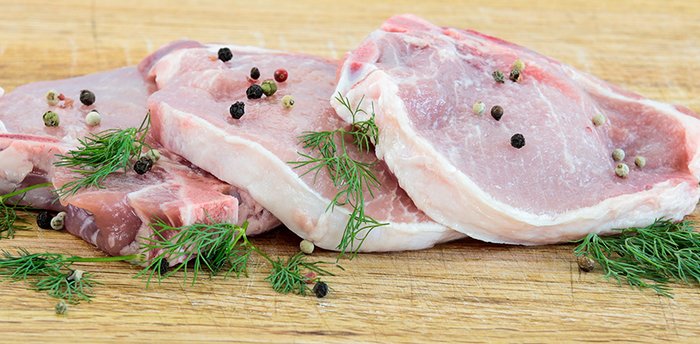
17. Top Sirloin Steak
Carb count: 0 grams per 3 ounces
This cut of beef is one of the leaner options at the supermarket, making it a smart way to get your fill of protein with zero carbohydrate cost. It takes particularly well to marinades, which serve to tenderize the meat further. Red meat like sirloin beef is a natural source of creatine, which can help you throw down at the gym. You can up the nutritional ante by splurging for steak sourced from grass-fed cattle.
18. Roast Beef
Carb count: 0 grams per 2 ounces
For the most part, deli-style roast beef is spared the sugars that can be added to turkey and other lunchmeats. Surprisingly, it’s also one of the leaner options at the deli counter. The highly absorbable form of iron in beef can help during those suffer fests in the squat rack.
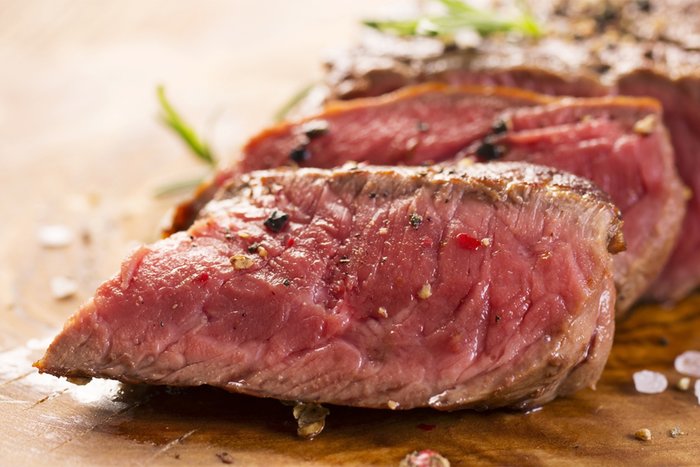
19. Bison
Carb count: 0 grams per 3 ounces
When it comes to grilled steak or burgers, consider your options beyond beef. Game meats like bison and elk are becoming easier to find at the butcher counter, and research shows that when bison is raised on the range, its meat is richer in omega-3 fats than traditionally-raised cattle.[7]
Other Low-Carb Meats And Fish
- Cornish game hen
- Halibut
- Ground beef
- Turkey breast
- Chicken thighs
- Canned sardines
LOW-CARB DAIRY
20. Gruyere Cheese
Carb count: 0 grams per ounce
Forget the mundane mass-produced cheese slices—this hard cheese from Switzerland has a great nutty flavor that’ll win you over. It also melts beautifully, making it a perfect way to add excitement to everything from steamed broccoli to low-carb pizza. This cured cheese is a top-notch source of calcium, a mineral involved in bone-building.
21. Butter
Carb count: 0 grams per tablespoon
Since butter has been found to not actually be that bad for you, it has once again found a place in frying pans and home baking.[8] For a rich-tasting riff on mashed potatoes, try blending steamed cauliflower with butter, fresh thyme, and a couple pinches of salt.
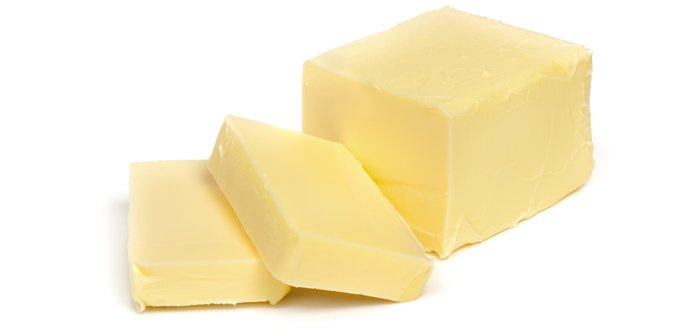
22. Eggs
Carb count: 1 gram per 2 large eggs
Which came first, the chicken or the egg? Who cares, since both supply plenty of protein power with little to no carbs. Plus, Canadian scientists recently discovered that eggs are a surprisingly good source of antioxidants to help mop up those cell-damaging free radicals.[9]
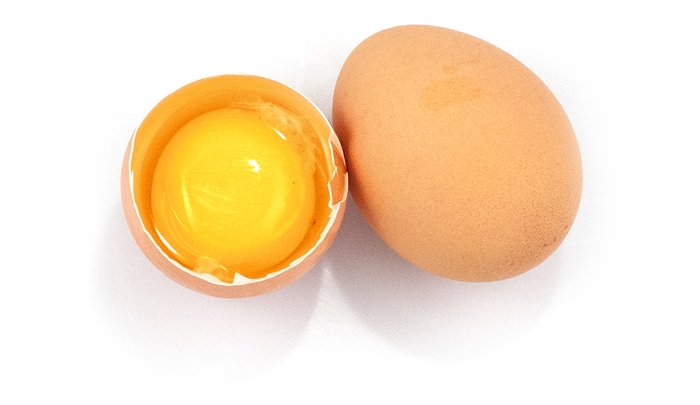
23. Cottage Cheese
Carb count: 6 grams per cup
Old-school bodybuilders popularized cottage cheese for a reason: It’s jam-packed with slow-digesting casein protein (28 grams per cup), which slays hunger and builds muscle over a longer period than whey protein. Sodium levels can vary greatly, so compare brands carefully.
24. Plain Greek Yogurt
Carb count: 9 grams per cup
In recent years, Greek yogurt has gone from an obscure item in the dairy aisle to a cultured rock star, thanks to the 23 grams of muscle-boosting protein per cup. Of course, if you want to keep the carb count low, you’ll have to opt for plain versions that are not pumped full of sugar.
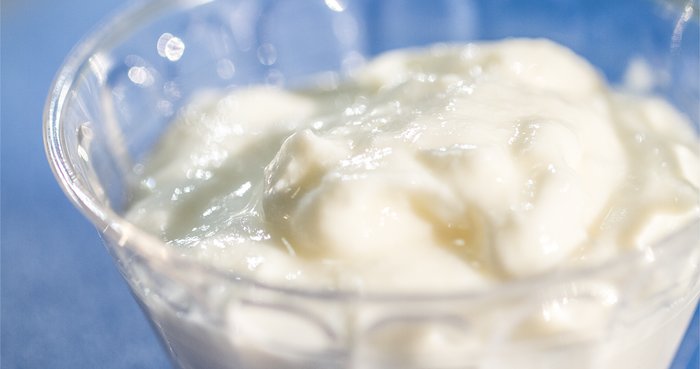
25. Goat Milk
Carb count: 11 grams per cup
This up-and-coming milk contains less carbs than cow’s milk, is easier to digest, and according to recent research is richer in a number of nutrients such as omega fatty acids and conjugated linoleic acid (CLA), a fatty acid that may help torch body fat.[10]
Other Low-Carb Dairy Products
- Brie cheese
- Goat cheese
- Monterey cheese
- Ricotta
- Plain kefir
- Sour cream
- Cream cheese
LOW-CARB PLANT PROTEINS
26. Tofu
Carb count: 3 grams per 3 ounces
Tofu isn’t only for vegetarians! It also offers an inexpensive low-carb protein option for carnivores who want a night off from meat. When you add tofu to sauces or other foods, it soaks up flavors brilliantly. Try it as a cheap protein in stir-fry, or marinate it like you would steak and slap it on the grill.
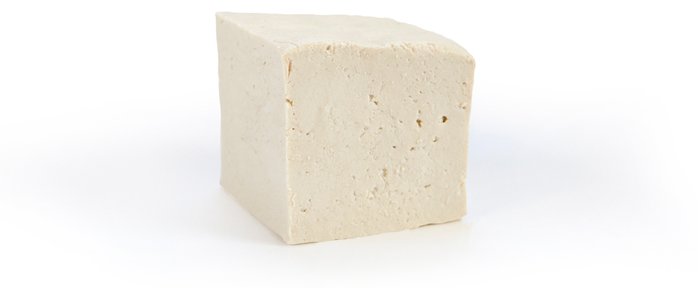
27. Tempeh
Carb count: 9 grams per 3 ounces
Tempeh is a meaty patty that’s made from a base of fermented soybeans, making it a respectable protein source. As a fermented product like yogurt or sauerkraut, it’s believed that tempeh contains a healthy population of ultra-healthy probiotics. Its flavor can be described as smoky, nutty, and earthy in a mushroomy kind of way. Try crumbling it up and adding it to chili, stir-fry, tacos, soups, casseroles, and pasta sauce.
28. Canned Pinto Beans
Carb count: 18 grams per 1/2 cup
Among canned beans, pinto beans contain some of the lowest carbohydrate numbers, but still boast significant amounts of plant-based protein—12 grams in each serving. You can use them to add a quick protein hit to salads and scrambled eggs. Their wallop of fiber can help reduce a spike in blood sugar caused by carbohydrates in a meal.
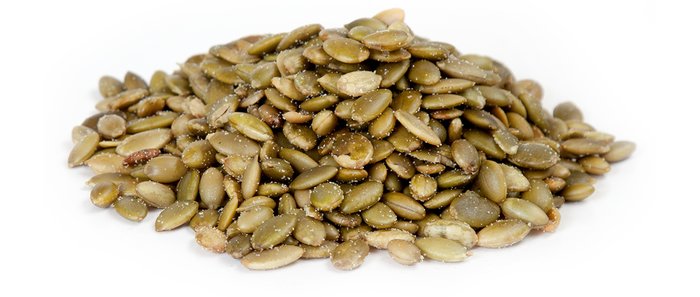
29. Pumpkin Seeds (Pepitas)
Carb count: 5 grams per ounce
This seed boasts 7 grams of protein and a whole lot of crunch in each serving. The carbs here are all slow-digesting, so they’ll give you sustained energy. Seeds from other gourds, like acorn squash, have similar properties. Toss them in oil and toast in the oven.
Other Low-Carb Plant Proteins
- Hemp seeds
- Edamame
- Unsweetened soy milk
LOW-CARB SNACKS
30. String Cheese
Carb count: 0 grams per 3 ounce
Good for kids and adults alike, prepackaged string cheese is one of the most convenient and tasty low-carb snacks around. Your growing muscles will also benefit from the extra shot of high-quality dairy protein. As with regular cheese, the stringy version offers up plenty of bone-strengthening calcium.
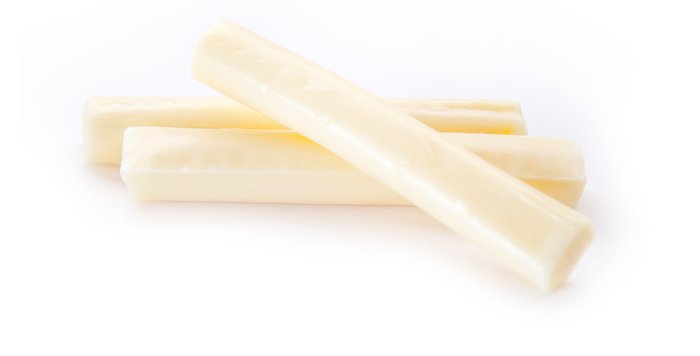
31. Jerky
Carb count: 3 grams per ounce
It can be a challenge to find packaged snacks that deliver respectable amounts of protein without an overload of the refined carbohydrates that can blow up your physique. One great exception: jerky. Still, be careful to select options where the chewy meat such as beef or turkey is not bathed in sweeteners.
32. Walnuts
Carb count: 4 grams per ounce
Not only can walnuts help you snack your way through a low-carb diet, but their lofty level of mega-healthy omega-3 fatty acids is another good reason to go nuts for them. When purchasing nuts, opt for salt-free to keep your sodium intake in check.Walnuts also supply copper, a mineral required for proper energy production in the body.
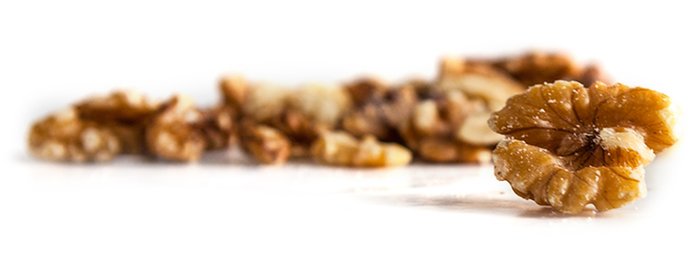
33. Kale Chips
Carb count: 8-12 grams per ounce
Kale transforms into an addictively crunchy snack when crisped in the oven, and still gives you tons of vitamins C, K, and A. You can make them yourself, or find them premade in health food
Other Low-Carb Snacks
- Sausage sticks (Pepperettes)
- Mixed nuts
- Pecans
- Hazelnuts
- Sunflower seeds
LOW CARB GRAINS AND FLOURS
34. Almond Flour
Carb count: 6 grams per 1/4 cup
Made from finely ground almonds, paleo-approved almond flour can help turn your pancakes or other baked goods into much more suitable fare for your six-pack. Beyond helping you slash the carbs, almond flour also has higher amounts of protein, heart-friendly monounsaturated fat, and the supercharged antioxidant vitamin E than grain-based flours do.
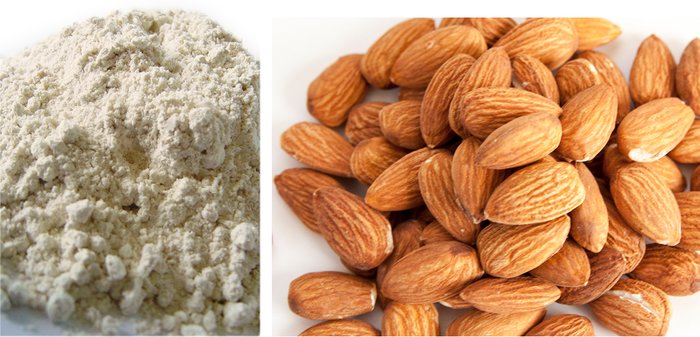
35. Shirataki Noodles
Carb count: 0 grams per 3 ounce
These translucent noodles are made from the powdered root of the Asian konjac yam plant and consist mostly of an indigestible fiber called glucomannan, giving each bowlful a zero net carb cost. Shirataki noodles have a mild taste on their own, but they soak up the flavors of accompanying sauces and spices very well. To use, drain and rinse well, then give the noodles a quick boil.
36. Amaranth
Carb count: 23 grams per 1/2 cup
Grains are never going to be the lowest-carbohydrate option at the grocer, but South American amaranth contains less than others. Like quinoa, amaranth is a source of essential amino acids. Amaranth becomes viscous once cooked in water, as it releases its starch. Swap it for oats for breakfast. This gluten-free grain supplies significant amounts of manganese, a mineral required for proper metabolism.
Other Low-Carb Grains/flour
- Hazelnut flour
- Coconut flour
- Peanut flour
- Low-carb wraps
- Wheat germ
LOW-CARB DRINKS
37. Unsweetened Iced Tea
Carb count: 0 grams per cup
While sweetened bottled tea is a sugar bomb, straight-up tea is a thirst-quencher that won’t cause you to lose the battle of the bulge. If you choose green tea, you’ll take in the antioxidants that researchers at Pennsylvania State University found can rev up your fat-burning metabolism when paired with an exercise program.[11]

38. Unsweetened Almond Milk
Carb count: 2 grams per cup
If you’re looking for a moo-free option to add to your protein shakes or cereal, this nut-based drink is a good choice that won’t come close to breaking the carb bank. Just be sure to select cartons labelled “unsweetened” to sidestep the added sugars pumped into many non-dairy beverages.
39. Maple Water
Carb count: 3 grams per cup
Think of maple water—the clear liquid from the maple tree before it’s boiled down into syrup—as the North American answer to coconut water, but with half the amount of sugar. Each sip has a subtle taste of the same flavor that you pour on your almond flour flapjacks. Maple water is naturally rich in manganese to help promote better bone health.
40. Tomato Juice
Carb count: 10 grams per cup
The first rule of low carb is you do not drink fruit juice. But tomato juice is way lower in carbs and sugar than other juices, and high in nutrients: In a study published in Nutrition Journal, athletes who sipped antioxidant-rich tomato juice had less post-exercise inflammation than those who didn’t, which could speed-up recovery.[12] Look for low sodium versions to beat the bloat.
Other Low-Carb Drinks
- Club soda
- Sugar-free seltzer water
- Unsweetened hemp milk
- Herb tea
- Water with BCAAs
THE BEST – WATER since no fat, no carbs, no calories and little side effects if any with stomach (if not limited in amount of water in your diet by your MD)!
Always check with your doctor on diet changes who should know your medical history better than anyone if you tell them all about you medical problems and if they are treating them!
QUOTE FOR TUESDAY:
“The idea behind the low-carb diet is that decreasing carbs lowers insulin levels, which causes the body to burn stored fat for energy and ultimately leads to weight loss.”
MAYO CLINIC
